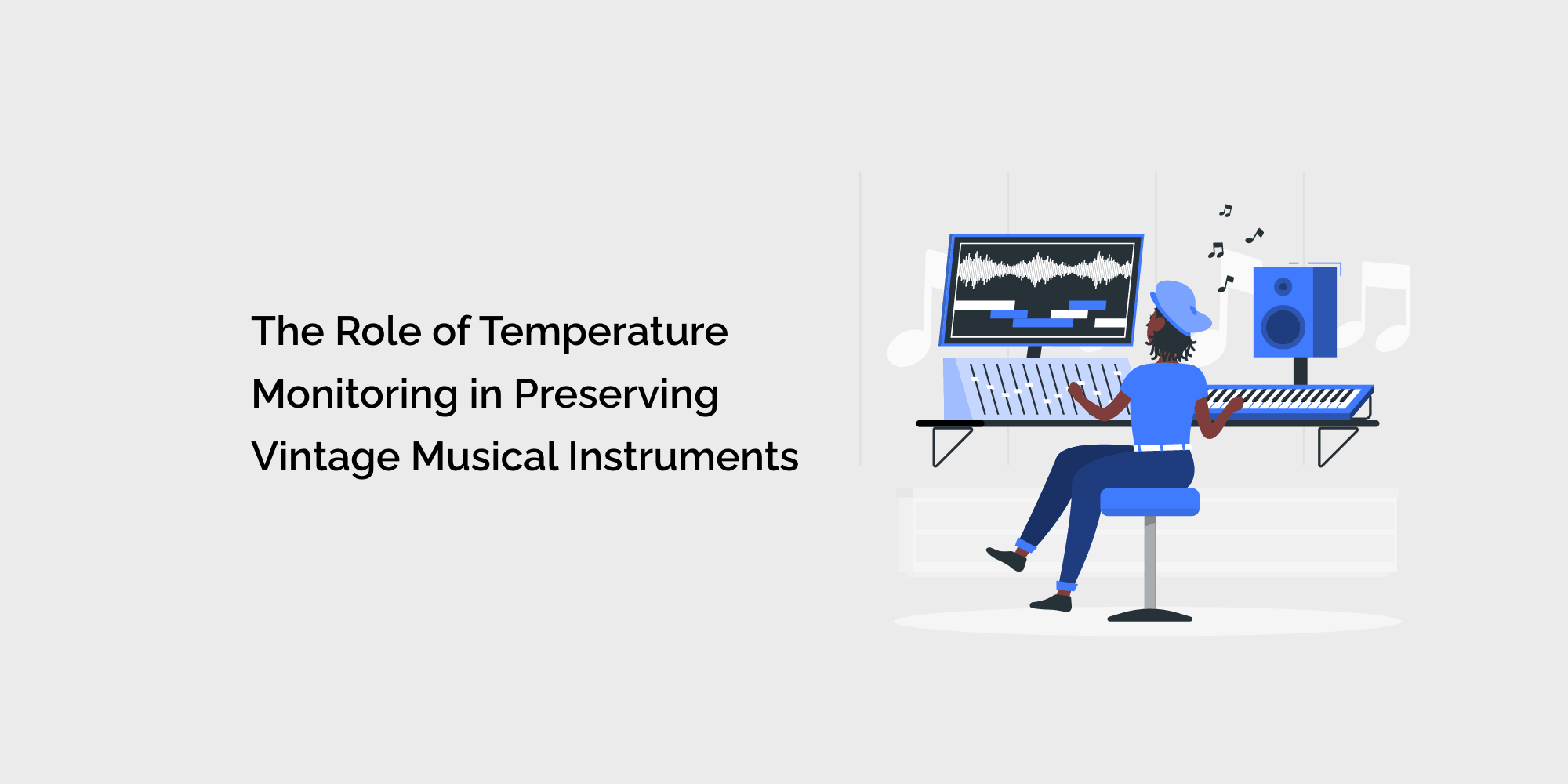Vintage musical instruments hold a special place in the hearts of musicians and collectors. They embody history, craftsmanship, and a unique tonal quality. Preserving these precious instruments requires meticulous care, including temperature monitoring. Temperature fluctuations can have a detrimental impact on vintage instruments, leading to irreversible damage and diminished value. In this detailed blog, we will explore the crucial role of temperature monitoring in preserving vintage musical instruments. By understanding the specific vulnerabilities of vintage devices, implementing effective temperature monitoring techniques, and creating optimal storage conditions, we can ensure the longevity and continued beauty of these remarkable pieces of musical history.
The Significance of Vintage Musical Instruments
Vintage musical instruments hold immense historical and artistic value. They represent eras, musical traditions, and the craftsmanship of skilled artisans. Additionally, vintage instruments possess unique tonal characteristics that distinguish them from modern counterparts, making them highly sought after by musicians and collectors.
Understanding the Vulnerabilities of Vintage Instruments
Vintage instruments are vulnerable due to their age, fragility, and sensitivity to environmental factors. The materials used in vintage devices, such as aged wood, delicate finishes, and rare alloys, can be susceptible to damage caused by temperature fluctuations. This vulnerability requires special attention and care to preserve its authenticity and value.
Temperature Monitoring for Vintage Instrument Preservation
Temperature monitoring plays a critical role in preserving vintage instruments. Stable storage conditions are vital to protect devices from temperature-related damage. By monitoring and maintaining optimal temperature levels, musicians and collectors can minimize the risk of structural damage, tonal alterations, and other detrimental effects.
Temperature Monitoring Techniques for Vintage Instruments
Various temperature monitoring techniques can be employed for vintage instruments. Manual monitoring with precision thermometers allows for periodic temperature checks, ensuring devices are stored within the desired range. Data loggers offer continuous monitoring, recording temperature data over time and providing valuable insights into temperature patterns. Wireless monitoring systems provide real-time updates and alerts, allowing immediate action in case of temperature deviations.
Strategic Placement of Temperature Sensors
Strategic placement of temperature sensors is crucial for accurate monitoring. Detectors should be placed in instrument cases to monitor the temperature directly affecting the instruments. Monitoring storage areas and display cabinets also provides an overview of the overall environment. Ensuring proper sensor placement and avoiding obstructions contribute to reliable temperature readings.
Setting Temperature Thresholds and Alarms
Determining optimal temperature ranges for vintage instruments is essential for preservation. Setting temperature thresholds and configuring alarms enable proactive monitoring. Deviation alerts prompt immediate action, allowing for quick response and corrective measures to protect instruments from potential damage.
Utilizing Climate-Controlled Storage Solutions
Climate-controlled storage solutions provide an ideal environment for preserving vintage instruments. Climate-controlled rooms and cabinets offer temperature and humidity control, ensuring stable conditions. Humidity control and temperature regulation minimize the risks of temperature-related damage, preserving vintage instruments' integrity and tonal qualities.
Calibration of Temperature Monitoring Devices
Regular calibration of temperature monitoring devices is necessary to maintain accuracy. Calibration ensures that temperature readings are precise and reliable. Certified calibration services or comparisons to certified references can provide accurate monitoring results.
Education and Expert Consultation
Educating collectors and musicians about the importance of temperature monitoring and preservation techniques is crucial. Providing guidance on best practices and seeking expert consultation from preservation specialists can enhance efforts in maintaining vintage instruments' authenticity and value.
Best Practices for Vintage Instrument Preservation
Consistent temperature monitoring, regular inspections, and proper maintenance are fundamental to preserving vintage instruments. Avoiding extreme temperature fluctuations, protecting devices from direct sunlight and humidity, and employing conservation efforts contribute to their long-term preservation and quality.
Certainly! Here are some frequently asked questions (FAQs) regarding temperature monitoring and preservation of vintage musical instruments:
Where should temperature sensors be placed in vintage instrument storage areas?
Temperature sensors should be strategically placed in instrument cases to monitor the temperature affecting the instruments directly. Monitoring storage areas and display cabinets also provides an overview of the overall environment.
How do temperature thresholds and alarms work?
Temperature thresholds are predetermined temperature ranges set as ideal for vintage instruments. Alarms can be configured to trigger when temperature deviations occur, prompting immediate action to prevent potential damage.
What are the benefits of climate-controlled storage solutions for vintage instruments?
Climate-controlled storage solutions, such as climate-controlled rooms and cabinets, offer temperature and humidity control. They provide a stable environment, reducing the risk of temperature-related damage and preserving vintage instruments' integrity and tonal qualities.
Conclusion
Temperature monitoring is a critical aspect of preserving vintage musical instruments. By understanding the vulnerabilities of vintage devices, implementing effective temperature monitoring techniques, and creating optimal storage conditions, musicians and collectors can protect these priceless treasures. Consistent monitoring, strategic sensor placement, temperature threshold configuration, and climate-controlled storage solutions are key factors in maintaining stable temperature conditions. Regular calibration, education, and expert consultation further enhance preservation efforts. Investing in proper temperature monitoring and preservation techniques ensures the longevity, authenticity, and enduring beauty of vintage musical instruments for generations to come.








